|
Second only to flight safety, your timing
of the race is the most important consideration you have. Your racers expect
and deserve fair and accurate timing to at least a tenth of a second resolution.
There are many ways to time a race. They range from the simplicity of a stop watch to the latest GPS technology.
US Air Race uses GPS loggers on board each
aircraft which record not only time at waypoints, but track and altitude while on the course.
These recorded data must be downloaded from each logger after the race, and then loaded into a spreadsheet for computations. The information can make turn observers unnecessary and provide accurate race times. An example of a data logger can be seen at:
http://www.usglobalsat.com/item.asp?itemid=153&catid=
I have ordered one of these units
for evaluation and the potential exists that use of such a data logger be required in races for 2008. Timing and sufficient personnel to man up the turn points is a big logistical issue for race organizers.
Stop watches are the quintessential sports
timing device. They are simple to operate and can deliver accurate timing –
up to a point.
I have two digital stop watches of
different brands and they both have a limitation that render them unsuitable for timing cross country air races. Up to 30 minutes elapsed time their resolution is 100ths of a second.
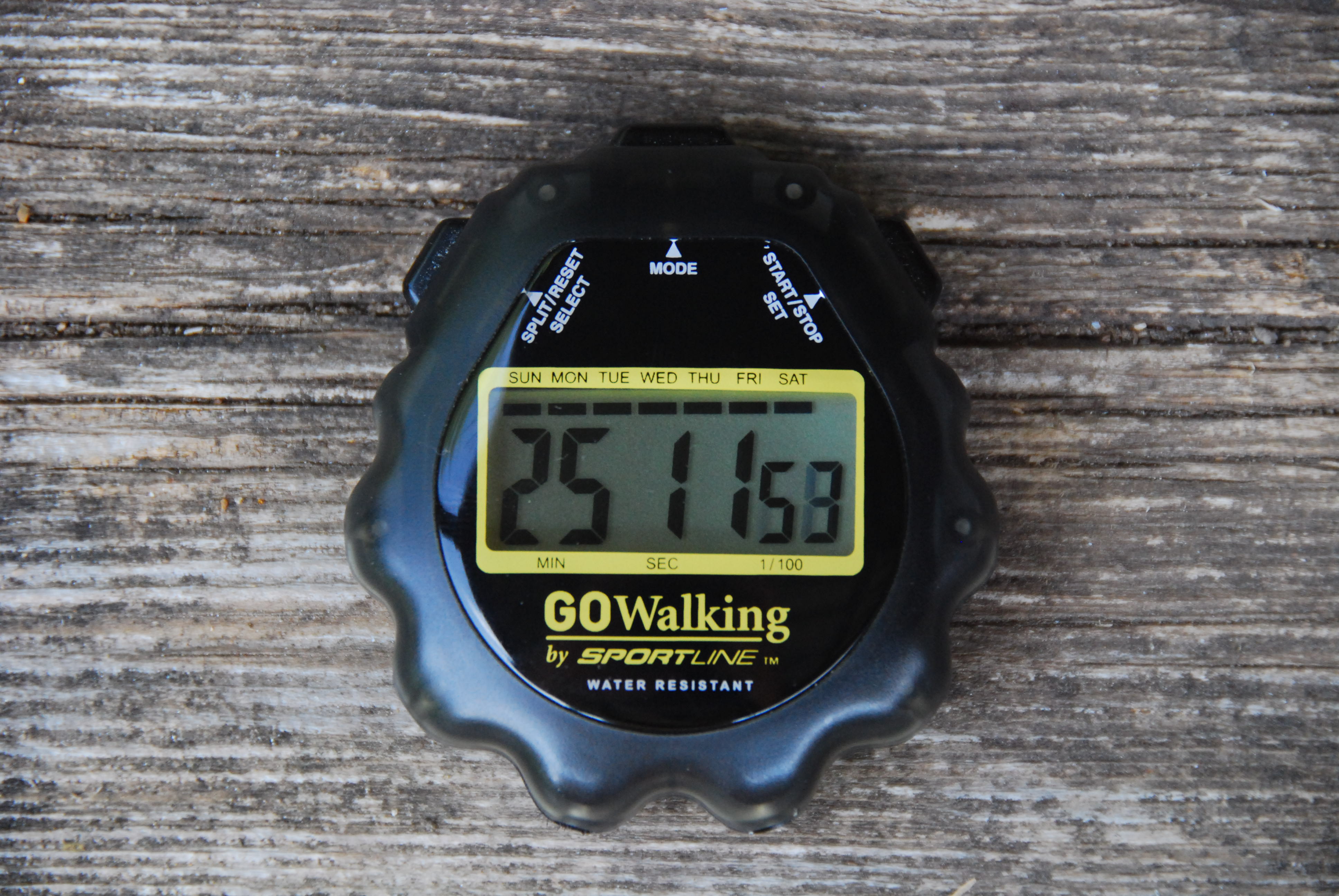
After 30 minutes, the minutes:seconds:hundredths display begins to show hours:minutes:seconds.
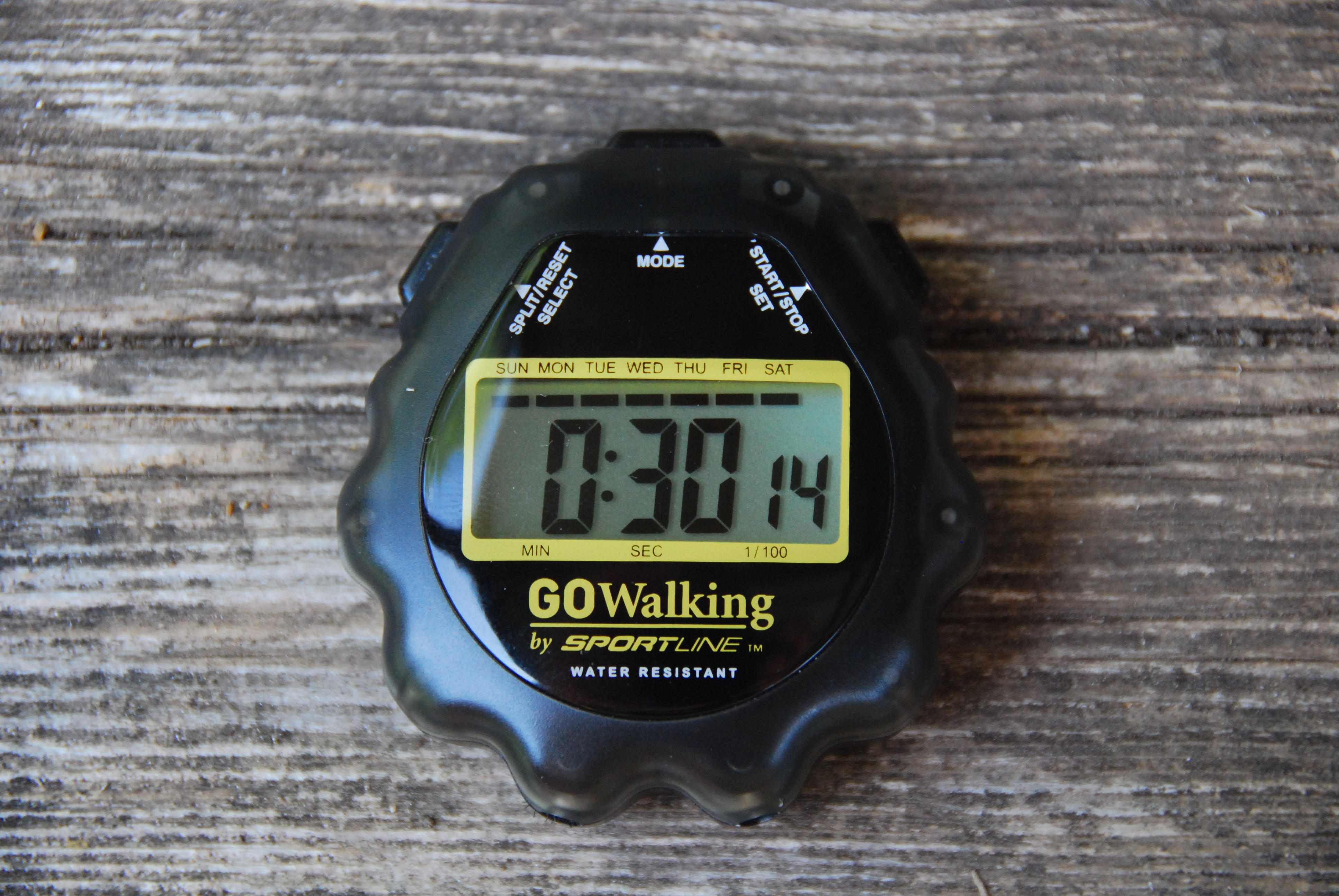
The lack of sub second resolution after
30 minutes is something for you to watch for in your selection of a stopwatch.
Another drawback to the stopwatch is that
the start and finish line must be the same, or they must be close enough that the timer can move from the start line after
the last aircraft has passed, to the finish line before the first plane finishes.
If the start and finish line are separated
by a great distance (as a true Cross Country race) the only way to time the race is to employ clocks which use a common reference. For this we can use either “Atomic” clocks or GPS technology.
Atomic clocks use a radio signal
to synchronize to the U.S. National Bureau of Standards clock. These clocks are accurate to the second. No Atomic clocks
that I’m aware of have a sub-second resolution display.
To take advantage of GPS time synchronization
but to display sub-second resolution on a timer display, we needed the services of a person skilled in computer programming
with GPS satellite input signals. Fortunately, such a person is one of the League
brethren, Race 91!, Dennis Collins.
Dennis has put together a computer program
which, when mated with a GPS antenna either internal or external to the computer, will provide a display of the current GPS
time in the form hours:minutes:seconds.thousandths
Using the “Collins Timer” we
can start a race in Texas
and finish it in Arizona with elapsed times accurate to the “nth degree”. Cross country racing at its finest.
Using the Collins Timer is simple
and efficient. The timer display shows GPS time as described.
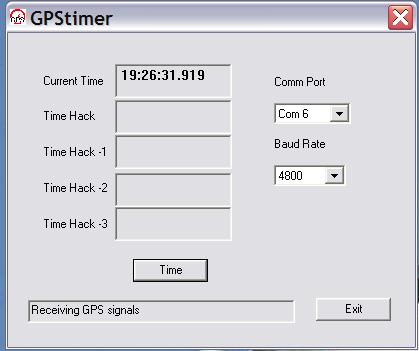
When the enter button or space bar is initially
pressed, the time in the “Current Time” window is pushed down into the “Time Hack” window.
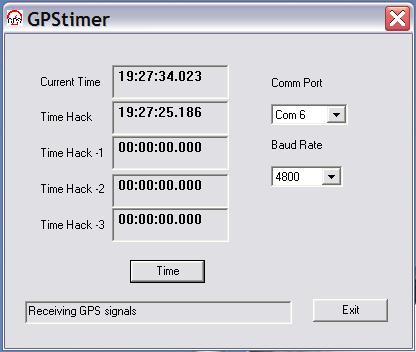
When the enter key or space bar is pressed
a second time, the Current Time is pushed into the Time Hack window and the time in the Time Hack window is pushed into “Time
Hack - 1”.
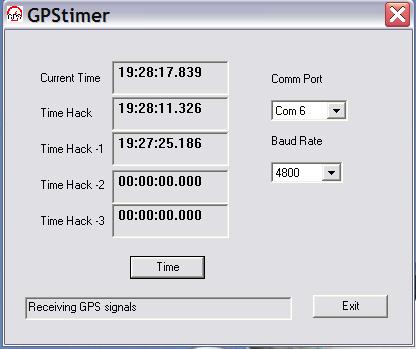
This sequence continues, each activation
of space bar or enter key pushing times down the screen until all four time hack displays are full.
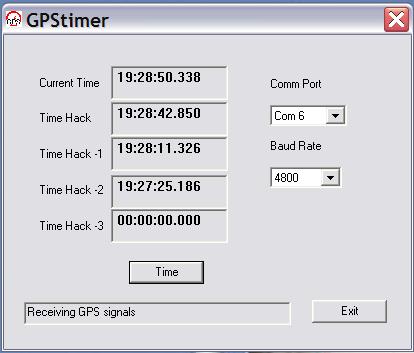
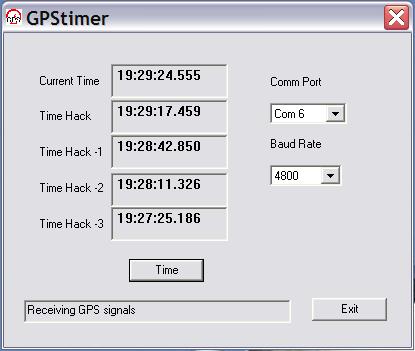
On the fifth activation, the oldest time
is pushed off the display.
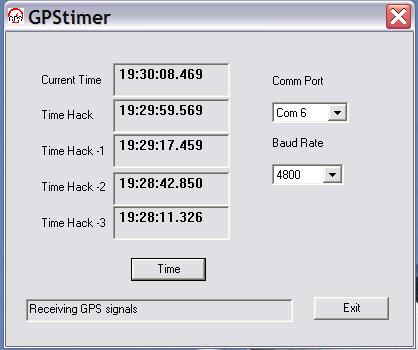
Start / Finish
It’s important to get consistent
time readings at the start and finish line. Your racers depend on your timing
team for accuracy and fairness.
To help the timers to attain this goal,
you need to provide some sort of start/finish ”line” for them to
use. A timer can’t just look out at the sky and when an airplane whizzes
by at 200 MPH shout “Now!” or hit a timer button. Too much margin
for error.
There needs to be some reference point
against which the timer can start and stop times. Since aircraft don’t
fly over marked lines in the sky, we’ll have to make our own.
Here’s an example of one way to do
that:
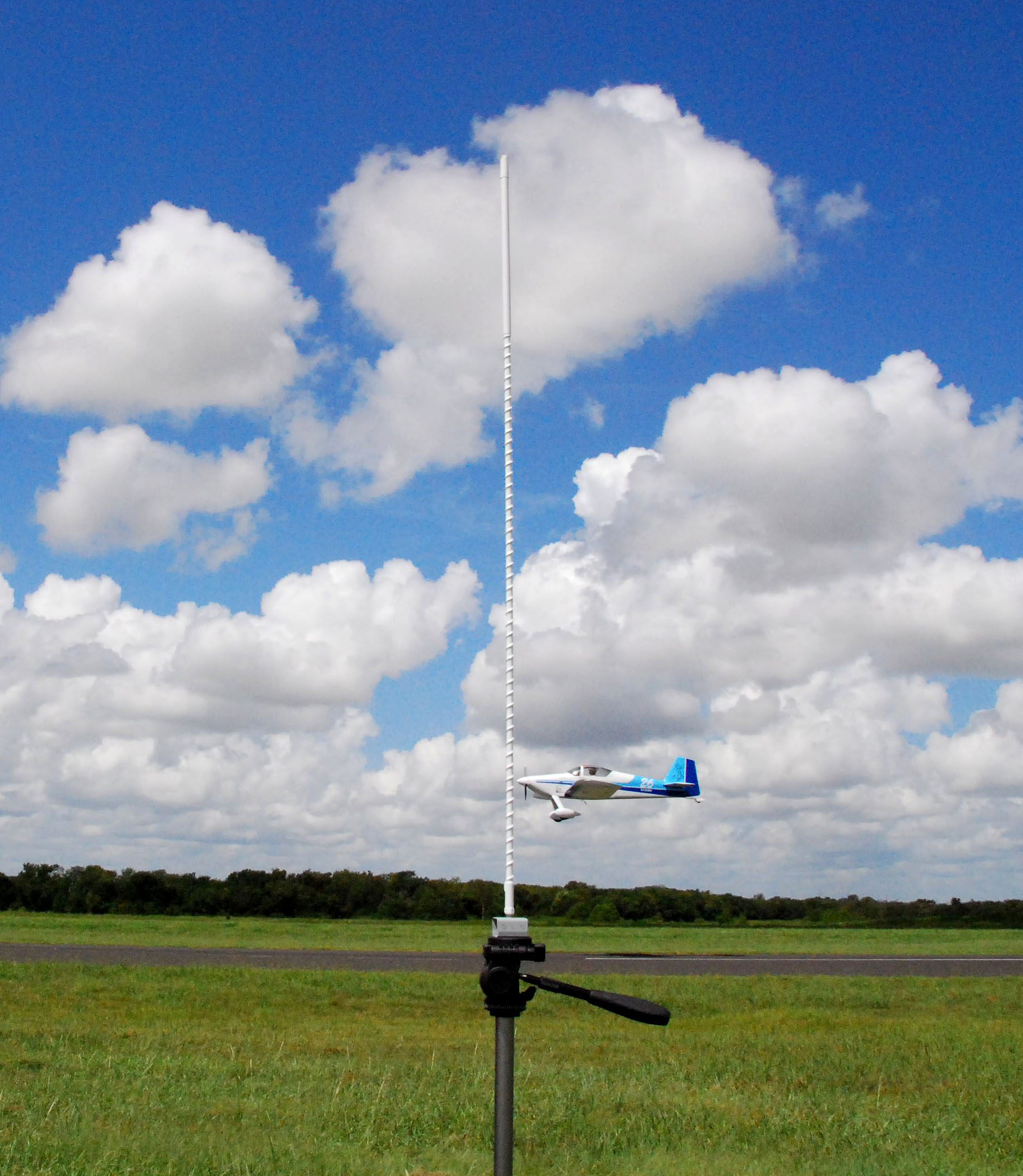
This start/finish line consists of a 48-inch
fiberglass antenna available at Radio Shack, a shop-made adapter and a tripod. When
sighting across this start/finish “line” a timer has an easy reference to use for each aircraft. Even if the aircraft passes a little high it will be simple for the timer to extend the line visually.
Any natural feature can also be used. We’ve used convenient power lines – when the aircraft passed over the
line, the time was started/stopped. We’ve also used telephone poles
and, would you believe, a crane.
Almost any fixed point can be used –
as long as it gives the person running the timer a consistent reference point against which to start and stop the clock.
|

